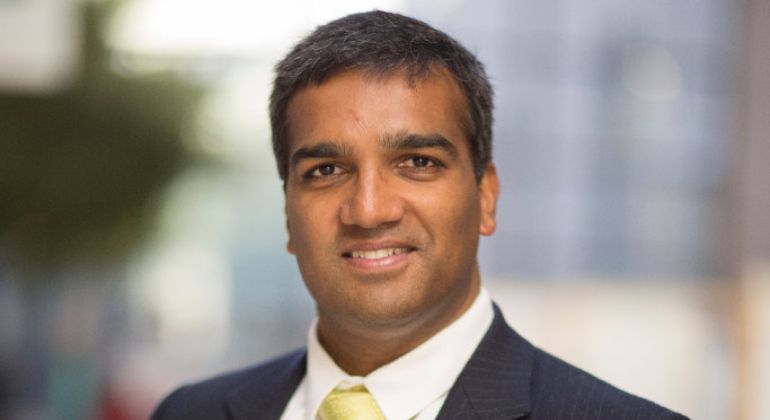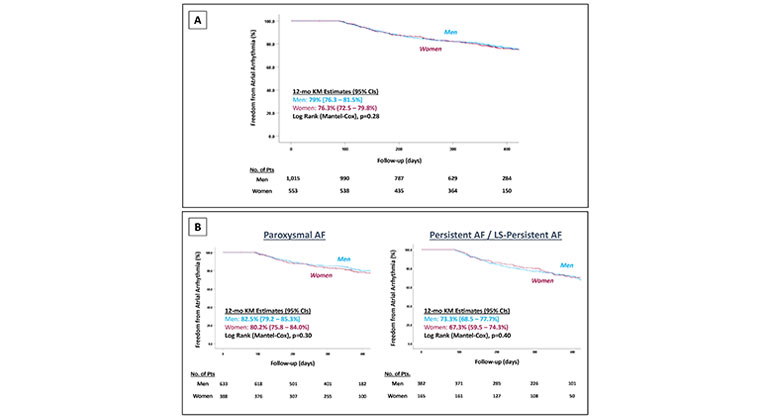Leadless Pacemaker Showing Promising Results After One-Year
Vivek Reddy, MD, of The Mount Sinai Hospital reports 12-month follow-up study results in late-breaking clinical trial presentation at Heart Rhythm 2014.
Vivek Reddy, MD, Director of Arrhythmia Services for The Mount Sinai Hospital, reported his promising12-month follow-up data showing the world's first leadless pacemaker is demonstrating overall device performance comparable to conventional pacemakers. Dr. Reddy presented the one-year LEADLESS study data findings during his late-breaking clinical trial presentation on May 9 at Heart Rhythm 2014, the Heart Rhythm Society's 35th Annual Scientific Sessions in San Francisco, CA.
The LEADLESS study's long-term follow-up has evaluated 32 patients with a slowed heartbeat, bradycardia, who successfully received St. Jude Medical's Nanostim™ leadless pacemaker at two hospitals in Prague and one in Amsterdam. The findings, which assessed device performance and patient outcomes through 12-months of follow-up, show pacing thresholds (0.43 volts) and sensing (10.32 mV) of the leadless pacemaker device are equivalent to those in traditional pacemakers. In addition, there was no experience of infections or failure to sense, pace, or communicate with the pacemaker.
"This is the first time we've seen one-year follow-up data for this innovative, wireless cardiac pacing technology and our results show the leadless pacemaker is comparable to traditional pacemakers, says Dr. Vivek Reddy, Director of Arrhythmia Services at The Mount Sinai Hospital who is the study's co-investigator and Chairman of its Steering Committee. "Our latest findings further support the promising performance and safety of this minimally-invasive, non-surgical pacing device. More long-term follow-up of these LEADLESS study patients will further our understanding of the potential advantages, benefits, and complication risks of leadless pacemaker technology, along with additional ongoing, larger trials.
In February, Dr. Reddy was the first to implant the leadless pacemaker in the United States at The Mount Sinai Hospital launching the multicenter clinical trial LEADLESS II which aims to further test the leadless pacemaker more widely for safety and efficacy in 670 patients at 50 centers across the US and Canada.
The miniature-sized, leadless cardiac pacemaker is placed directly inside a patient's heart without surgery during a catheter-guided procedure through the groin via the femoral vein. The device, resembling a tiny, metal silver tube and smaller than a triple-A battery, is only a few centimeters in length, making it less than ten percent the size of a traditional pacemaker. It works by closely monitoring the heart's electrical rhythms and if the heart beat is too slow it provides electrical stimulation therapy to regulate it. More than 4 million patients globally have a pacemaker, and 700,000 new patients receive one each year.
In comparison to a conventional pacemaker, the new-age leadless pacemaker eliminates the need for a surgical pocket and no visible pacemaker device under a patient's chest skin, no incision scar on the chest, no connector wires or leads, and no restrictions on a patient's daily activities. The device's benefits may also allow for less patient discomfort, infections, and device complications and dysfunction.
The LEADLESS study was funded by St. Jude Medical, the manufacturer of the Nanostim pacemaker.
Dr. Reddy receives financial compensation as a consultant and advisory board member for St. Jude Medical, the study sponsor and manufacturer of the Nanostim pacemaker system being evaluated in this study. In addition, in 2013 he received one-time financial compensation from St. Jude Medical in the form of an option buyout relating to St. Jude Medical's acquisition of Nanostim.
About the Mount Sinai Health System
Mount Sinai Health System is one of the largest academic medical systems in the New York metro area, with 48,000 employees working across eight hospitals, more than 400 outpatient practices, more than 600 research and clinical labs, a school of nursing, and a leading school of medicine and graduate education. Mount Sinai advances health for all people, everywhere, by taking on the most complex health care challenges of our time—discovering and applying new scientific learning and knowledge; developing safer, more effective treatments; educating the next generation of medical leaders and innovators; and supporting local communities by delivering high-quality care to all who need it.
Through the integration of its hospitals, labs, and schools, Mount Sinai offers comprehensive health care solutions from birth through geriatrics, leveraging innovative approaches such as artificial intelligence and informatics while keeping patients’ medical and emotional needs at the center of all treatment. The Health System includes approximately 9,000 primary and specialty care physicians and 11 free-standing joint-venture centers throughout the five boroughs of New York City, Westchester, Long Island, and Florida. Hospitals within the System are consistently ranked by Newsweek’s® “The World’s Best Smart Hospitals, Best in State Hospitals, World Best Hospitals and Best Specialty Hospitals” and by U.S. News & World Report's® “Best Hospitals” and “Best Children’s Hospitals.” The Mount Sinai Hospital is on the U.S. News & World Report® “Best Hospitals” Honor Roll for 2024-2025.
For more information, visit https://www.mountsinai.org or find Mount Sinai on Facebook, Twitter and YouTube.

